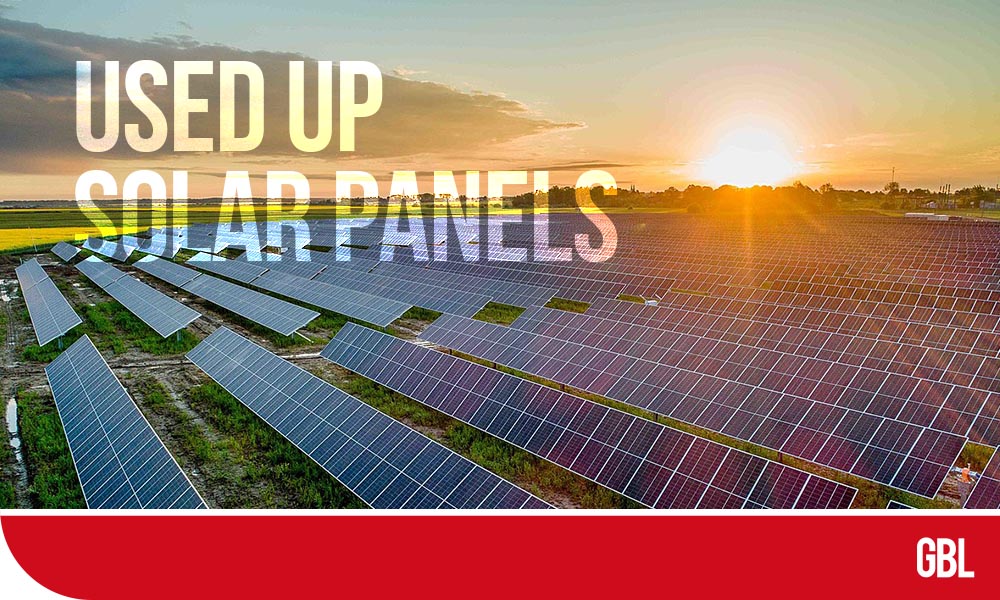Last week, the Department of Energy (DOE) announced a plan of action intended to help the United States launch a comprehensive system for handling and recycling used up solar panels. Some reports have recommended that recycling used up solar panels could make up a tenth of all electronic waste in upcoming decades.
A new goal has been announced by the Solar Energy Technologies Office (SETO) to bring the cost of recycling used up solar panels to about $3 per panel by 2030. It is a threshold that would make the practice economic for the first time.
That follows an earlier goal of the Department of Energy (DOE) to try to halve the price of solar power by the decade’s end. According to the office of Energy Efficiency and Renewable Energy (EERE), Solar could contribute 37 to 42 percent of the grid’s power by 2035, in line with the Biden administration’s goal of a carbon-free grid.
According to the new analysis published, recyclers would be able to mine billions of dollars worth of materials from discarded or used up solar panels. It should ease bottlenecks in the supply chain for solar panels and make them more sustainable.
Currently, most of the used up solar panels in the United States get shredded or chucked into a landfill. Unfortunately, the economics don’t shake out in favor of recycling. The value you can squeeze out of a recovered panel has not been enough to make up for the cost of transporting and recycling it. But, according to the recent analysis done by Rystad Energy, a research firm, it is on track to change.
Rystad anticipates the value of recyclable materials from solar panels to grow exponentially over the next several years, ballooning to $2.7 billion in 2030 from just $170 million this year.
Many thanks to a growing demand for solar coupled with an anticipated pinch in the materials needed to make panels. Technological advancements are also making it easier to extract more valuable materials from old used up solar panels, making recycling a sweeter financial deal.
Solar energy currently makes up just over 3 percent of the global electricity mix. But the energy systems of the world are at the start of a drastic makeover to bring more renewable energy online.
Solar could account for over 40 percent of the global power supply to hit that goal. It also helps grow super affordable solar panels, becoming a cheaper source of electricity than coal or gas all around the world.
There are some clouds ahead yet in the otherwise sunny forecast for solar energy. First, you require more materials to build solar panels. Currently, mining and processing of those materials are concentrated in many countries. Unfortunately, that has left the solar supply chain vulnerable to disruptions and rife with abuse.
While mining materials used in solar panels, the nonprofit Business & Human Rights Resource Center has documented human rights abuses. Polysilicon used in solar panels is made through an energy-intensive process that has been tied to forced labor. Those announcements have led to sanctions on some solar products that are made in China.
The Paris climate accord requires countries to work together to quit releasing greenhouse gas emissions from burning fossil fuels over the next few decades to keep the damaging effects of climate change at a more manageable level.
Recycling Could Get More Cultivated Soon
Recycling will play a major role in diversifying the supply chains. It might also decrease the toll that mining takes on the environment, nearby communities, and on the health of workers.
More of the materials used to make new solar panels will likely come from re-hashed panels in the future. According to Rystad, recovered silver, polysilicon, copper, and aluminum can fetch the most cash on the recycling market.
Unfortunately, silver and solar-grade silicon usually are not separated out with the recycling methods used today. Instead, it is frequently shredded along with the rest of the panel and sold as crushed glass. Luckily, recycling could soon get more cultivated. Thanks to the new research into how to recover the most valuable stuff inside photovoltaic panels.
Although 80% of a typical photovoltaic panel is made of recyclable materials, disassembling them and recovering the glass, silver, and silicon is extremely difficult.
AJ Orben, Vice President of We Recycle Solar, says there is no doubt that there will be an increase in the used up solar panels entering the waste stream in the next decade or so. We Recycle Solar is a Phoenix-based company that breaks down panels and extracts valuable metals while disposing of toxic elements. That’s never been a question.
The Department of Energy (DOE) said in the recycling action plan that it intends to embark on a series of interviews with solar users, waste management firms, and recyclers on how to collect, transport, and handle solar components. It said that the researchers would also try to learn from the experiences of the car and construction industries with recycling.
Process of Recycling Used Up Solar Panels
Recycling used up solar panels is not an easy process. Highly specialized equipment and workers are required to separate the aluminum frame and junction box from the panel without shattering it into glass shards.
To recover silicon, specialized furnaces are used to heat panels. In many states, panels are classified as hazardous materials, which require expensive restrictions on packaging, transport, and storage.
Conclusion
Government subsidies are one way to make recycling of used up solar panels economically viable for the waste generators, who now bear the high cost of recycling.
Solar started to take off in the 2000s with a lifespan of around 25 years. We are just now approaching the first big wave of used up solar panels. If it is treated properly, that wastage could become a treasure.
DOE said that the solar office aims to establish a comprehensive database containing information about specific materials, quantities, ages, locations, and causes of end-of-life panels by 2024. It also aims to research the ways to make the design of solar panels more suitable for reuse and recycling.
Read Next Blog With Us: 8 Efficient Ways to Make Your Chrome Browser Faster

















